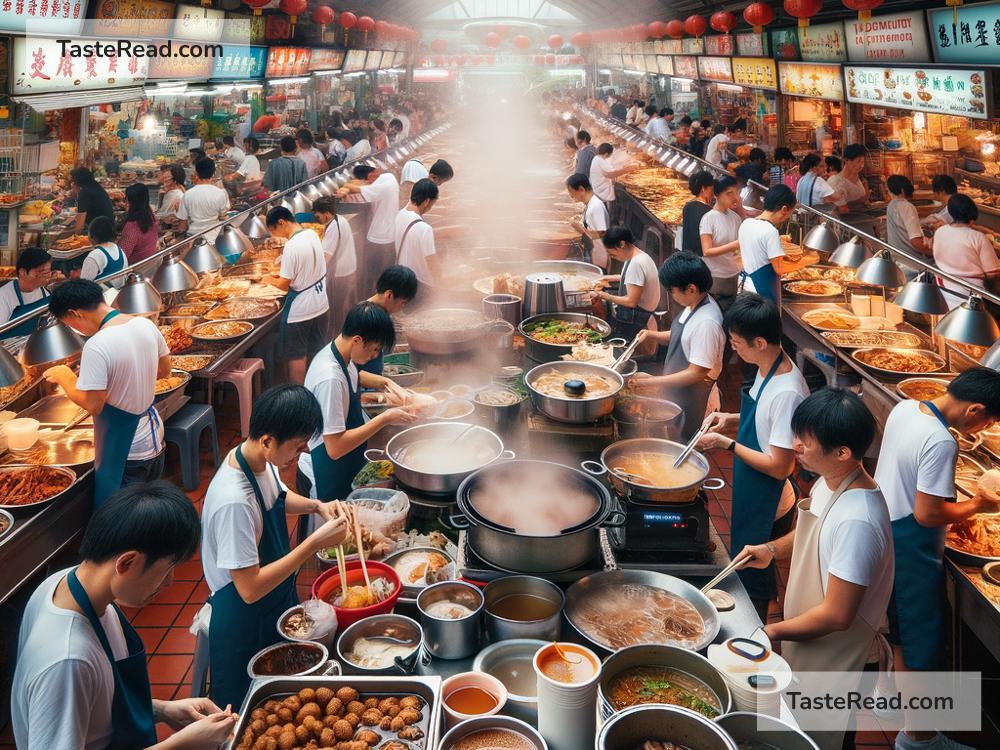Singaporean cuisine is a vibrant tapestry woven from the threads of Chinese, Malay, and Indian culinary traditions, creating a unique and delicious blend that represents the multicultural heritage of Singapore. This tiny yet mighty country is a melting pot of cultures, thanks in part to its strategic location that has historically made it a hub for trade and migration. This confluence of cultures is beautifully reflected in its food, making Singaporean cuisine a perfect illustration of harmony and diversity on a plate.
The Melting Pot of Flavors
The story of Singaporean cuisine is a tale of migration and the coming together of diverse communities, each bringing their own culinary practices, ingredients, and traditions. The Chinese, Malay, and Indian influences are most predominant, but you’ll also find touches of Indonesian, Peranakan, and Western cuisines, making the gastronomic landscape in Singapore incredibly rich and varied.
Chinese Influence
The Chinese community is the largest ethnic group in Singapore, which naturally means their food has become a cornerstone of Singaporean cuisine. Dishes such as Hainanese chicken rice, char kway teow (stir-fried rice noodles), and bak kut teh (pork rib soup) are iconic, loved by locals and visitors alike. These dishes, while originating from China, have been adapted over the years to suit local tastes. For example, the Singaporean version of Hainanese chicken rice is served with spicy chili sauce and ginger paste, adding a local twist to the traditional dish.
Malay Influence
The native Malays have also significantly impacted the local food scene, introducing bold spices and aromatic herbs that are now integral to Singaporean cuisine. Dishes like nasi lemak (coconut rice served with anchovies, peanuts, egg, cucumber, and spicy sambal), satay (grilled skewered meat), and rendang (a slow-cooked meat dish) showcase the complexities of Malay flavors. These dishes are characterized by their use of coconut milk, lemongrass, galangal, and turmeric, which give them distinctly rich and aromatic profiles.
Indian Influence
Indian migration has brought a kaleidoscope of spices to the Singaporean culinary palette, contributing to a variety of curries, bread, and vegetarian options that are now part of the everyday food scene. Dishes such as roti prata (Indian flatbread), fish head curry, and biryani (rice with meat or vegetables) are immensely popular. The diversity within Indian cuisine itself, from North Indian creamy gravies to South Indian tangy flavors, has enriched Singaporean food, making it even more diverse and vibrant.
A Perfect Blend
What makes Singaporean cuisine truly remarkable is not just the presence of Chinese, Malay, and Indian influences, but how these flavors have been blended, adapted, and sometimes, completely reinvented to create dishes that are unique to Singapore. For instance, the dish rojak, a traditional fruit and vegetable salad, embodies this fusion perfectly. Combining elements from Chinese (like tofu puffs and dough fritters) and Malay (like the spicy peanut sauce), rojak is a symbol of Singapore’s multicultural culinary identity.
Beyond Borders
Singaporean cuisine reflects not just a blend of different cultures but also a bridging of the past and the present, traditional and modern. As Singapore has evolved, so has its food landscape, with contemporary chefs and food enthusiasts experimenting with traditional recipes by introducing new techniques or non-native ingredients, giving rise to a ‘Mod-Sin’ (Modern Singaporean) cuisine. This innovative spirit ensures that while the traditional flavors are preserved, Singaporean cuisine continues to evolve and surprise.
Unity in Diversity
At its heart, Singaporean cuisine symbolizes unity in diversity. The sharing of food among different ethnic groups has fostered a sense of community and understanding, making food not just a subject of national pride but also a medium of cultural integration. Food festivals, hawker centers, and everyday mealtimes are celebrations of this rich heritage, where the story of Singapore’s multicultural tapestry continues to be told and retold.
Conclusion
Singaporean cuisine, with its fusion of Chinese, Malay, and Indian influences, offers a delicious testament to the country’s multicultural heritage. It’s this unique blend of traditions, spices, and flavors that makes Singapore’s food scene one of the most exciting and diverse in the world. Whether you are savoring a plate of fragrant biryani, biting into a spicy satay, or enjoying a bowl of warming bak kut teh, you are not just tasting food – you are experiencing the rich cultural mosaic of Singapore.


